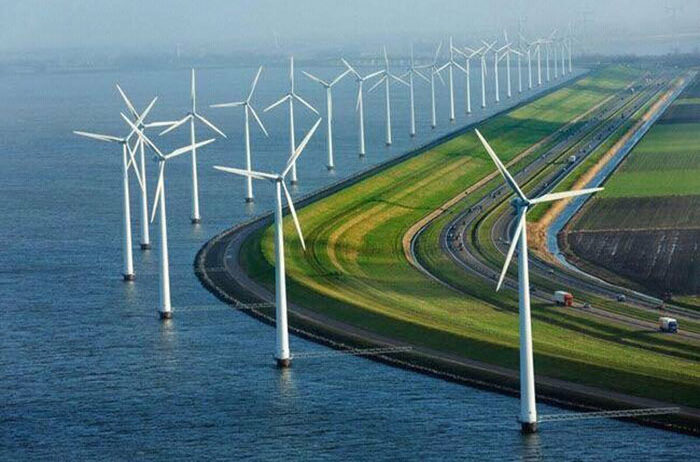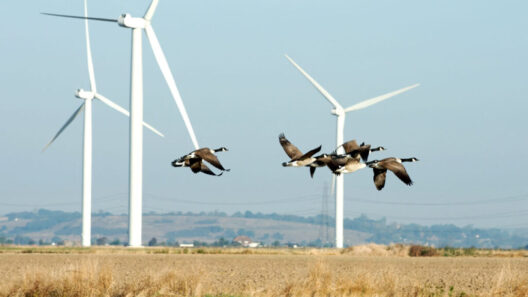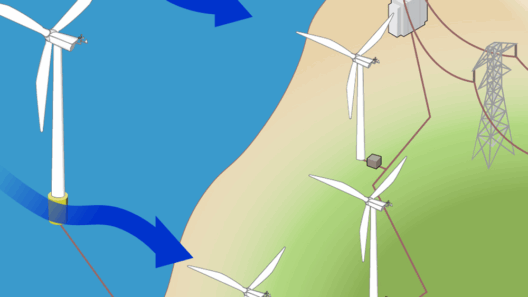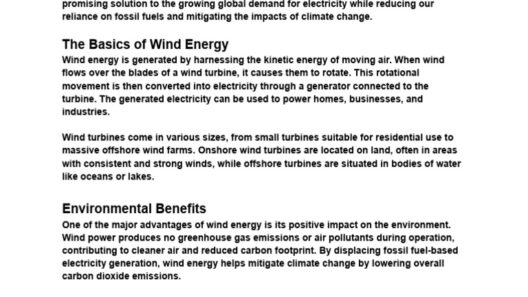Wind power has emerged as one of the most promising forms of renewable energy, harnessing the kinetic energy of moving air to generate electricity. But what lies at the foundation of this natural phenomenon? The ultimate source of energy for most wind can be traced back to the Sun, whose thermal radiation heats the Earth’s surface unevenly, creating the very currents that propel the turbines of wind farms. Understanding the intricate web of natural forces at play not only sheds light on the mechanics of wind power but also highlights a profound connection between natural elements and human innovation in the pursuit of sustainable energy.
As we delve deeper into the genesis of wind energy, we unearth a number of captivating natural processes and phenomena that contribute to the creation of wind. From solar radiation to the rotation of the Earth, the interplay of these factors paints a complex yet beautiful picture of how wind is born. This discussion not only enriches our understanding of wind power but also illuminates its aesthetic charm—the sight of wind turbines gracefully spinning against rolling hills or alongside picturesque coastlines is a testament to humankind’s ability to marry technology with nature.
Let us explore the profound relationship between solar energy and wind creation, the effects of the Earth’s rotation, and how atmospheric pressure variations contribute to this remarkable phenomenon.
The Solar Influence: How the Sun Ignites Wind Currents
At the core of wind generation lies the Sun, which serves as the primordial source of energy driving various meteorological phenomena. When solar energy strikes the Earth, different surfaces absorb heat unevenly—oceans, forests, deserts, and urban landscapes all absorb and release heat at varying rates. This discrepancy in temperature creates a gradient that leads to the formation of high and low-pressure systems.
As warm air rises, it creates an area of lower pressure beneath it, while cooler air from surrounding regions rushes in to fill the void. This movement of air is what we perceive as wind. The beauty of this natural process can be captured in the dynamic dance of air molecules, colliding and swirling in a seemingly choreographed manner, all under the watchful gaze of the Sun’s radiant light.
Seafarers and coastal communities have long recognized the power of wind, utilizing it for navigation and as a means of harnessing energy through sailing. Yet, it is only in recent decades that we have truly begun to embrace wind as a sustainable energy source at scale. The development of advanced wind turbine technology allows us to convert the natural grace of moving air into a formidable force for electricity generation.
The Earth’s Rotation: The Coriolis Effect and Wind Patterns
As we continue our investigation into the forces behind wind, we cannot overlook the Earth’s rotation. The rotation of our planet, categorized by its axial tilt and speed, plays an influential role in determining wind patterns globally. The Coriolis effect, named after the French engineer Gaspard-Gustave de Coriolis, describes how the motion of air is deflected due to the spinning of the Earth. This phenomenon causes winds to spiral in different directions in the Northern and Southern Hemispheres, creating distinct wind patterns that dictate not just local breezes but also larger climatic systems.
The interplay between the Coriolis effect and the uneven heating of the Earth’s surface gives rise to trade winds, westerlies, and polar easterlies. These wind belts are essential in influencing weather patterns across the globe, transporting moisture and heat, and even impacting ocean currents. In this sense, the Earth’s rotation is an essential cog in the machinery of our planet’s climate system— a gentle reminder of the interconnectedness of all things and the elegance of natural forces.
Pressure Systems: A Symphony of Air Movements
Another crucial element in the creation of wind is the variation in atmospheric pressure. It is this constant dance between high and low-pressure areas that generates the air movements we experience regularly. High-pressure systems, often associated with clear skies and calm conditions, contrast sharply with low-pressure systems, which tend to be breeding grounds for storms and turbulent weather.
The sheer juxtaposition between these two systems can create winds strong enough to power entire cities or, alternatively, provide gentle breezes ideal for leisurely outdoor activities. The visual splendor of a wind turbine catching the sunlight while producing clean energy against a backdrop of shifting clouds exemplifies the harmony between technology and the natural world.
The Aesthetic Appeal of Wind Power
Beyond the immediate utility of wind power lies its aesthetic significance. Wind turbines, adorned with sleek blades and towering structures, have become symbols of sustainable progress. The sight of wind farms dotting the landscape evokes a sense of hope and innovation—a promise of a cleaner, greener future fueled by nature itself. Their elegant design captures the imagination, transforming what could be viewed as mere technology into a sculptural form that melds with the Earth’s contours.
As the blades of these turbines catch the winds, they create a visual dynamic that is not only captivating but also inspiring. The rhythmic rotations remind us of the omnipresence of wind and its potential harnessing capabilities. Observing a wind farm against a sunset-draped horizon, one cannot help but appreciate the intersection of nature’s artistry and human ingenuity, a reminder of the possibilities that arise when we align our energy needs with the forces of the planet.
Indeed, wind energy, with its natural origins linked to solar dynamics, atmospheric variations, and Earth’s rotation, encapsulates a story of resilience, beauty, and sustainability. Grasping these fundamental elements creates not only a deeper appreciation of wind power but also fosters a connection that propels humanity toward a future enriched by clean energy solutions.







